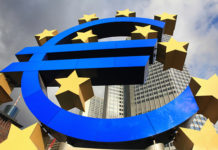Markets
There’s still no other place to look today, but to the FX market. The trade-weighted dollar gains a big figure, surging from 103 to nearly 104, the highest level since 2002 and coming from 100 only last week. The test of 103.82 (2017) is ongoing. EUR/USD briefly dipped below 1.05 , being lured by the 2017 bottom at 1.0341. The high stakes energy game between the EU and Russia doesn’t help the euro, but isn’t its biggest issue. Price pressure, de-anchored inflation expectations and an ignorant ECB are. Spanish April headline inflation today fell by 0.2% M/M to 8.3% Y/Y from 9.8% Y/Y as electricity prices came off record levels. It shows that the ECB is right that elevated energy would eventually drop out of the equation. The surge in core inflation from 3.4% Y/Y to 4.4% however highlights the cost of sticking to the transitory narrative for too long. A more or less similar story is true for Belgian inflation numbers (see headline). German April inflation still set a new multiyear high in April (despite fuel duty cuts by the government), rising more than forecast by 0.7% M/M from 7.6% Y/Y to 7.8% Y/Y. Markets greet the new batch of inflation numbers with their by now known vote of no confidence in ECB policy. Apart from the weaker euro, long term bond yields rise by 10bps+. The move is entirely due to a new spike in inflation expectations. After the Swedish Riksbank’s sudden U-turn, the ECB in its policy stance is now only flanked by the Swiss National Bank and the Bank of Japan. The latter decided to even add stimulus this morning. By deploying, daily, unlimited bond purchases they want to keep the Japanese 10-yr yield below 0.25% at any cost. The Japanese yen, you guessed it, again lost more than one big figure, trading temporary at 131 against the dollar for the first time since 2002.
The US eco calendar centered around first quarter GDP numbers. GDP unexpectedly declined by 1.4% Q/Qa while consensus expected a slowdown from 6.9% Q/Qa to 1% Q/Qa. Details painted a more optimistic picture as net exports (imports 17.7% Q/Qa vs exports -5.9% Q/Qa) and inventories deducted headline growth by 4 percentage points. Government spending fell as well (-2.7% Q/Qa) pointing to good consumer spending (2.7% Q/Qa according to Commerce department) and business investments (2.3% Q/Qa). US markets didn’t really respond to the GDP print. It in any case won’t derail the Fed’s hawkish plans. The US yield curve flattens with yields rising by 3.2 bps at the front end and ceding 1 bp at the very long end.
News Headlines
Sweden’s Riksbank raised policy rates for the first time since 2019 by 25 bps to 0.25%. The likes of Ingves took a verbal U-turn over the previous weeks but today’s action still came as a surprise to some. High and way above-target inflation will last for some time. The Riksbank seeks to prevent that from entrenching in price and wage-setting by kicking of a rate hike cycle. It will also start the balance sheet roll-off from the second half of this year. Two or (more probable) three more hikes this year are penciled in. At the end of the policy horizon (2025Q2), the policy rate may have risen to <2% but the current state of (inflation) affairs suggest upside risks. The central bank in any case keeps the option of raising rates faster. The Swedish krona initially appreciated to EUR/SEK 10.25 but couldn’t maintain gains (currently trading near 10.34). Short-term swap yields jump 10 bps in the wake of the decision.
Belgian GDP growth slowed from 0.4% q/q to 0.3% in the first three months of the year. Compared to the same period last year, GDP was up 4.6%. Growth in services (0.5%) and construction (0.8%) was partially offset by a decline in the industrial sector (-0.8%), the NBB reported. It may suggest a first impact from the war in Ukraine. Data from Statbel showed consumer inflation stabilized at 8.31% y/y in April with monthly price dynamics slowing from 0.52% to 0.33%. It’s the first time since January 2021 y/y inflation doesn’t accelerate even as the likes of food showed large price jumps again. Core inflation however still quickened from 3.75% to 4.08%. Services inflation also rose from 3.78% to 3.96%.













